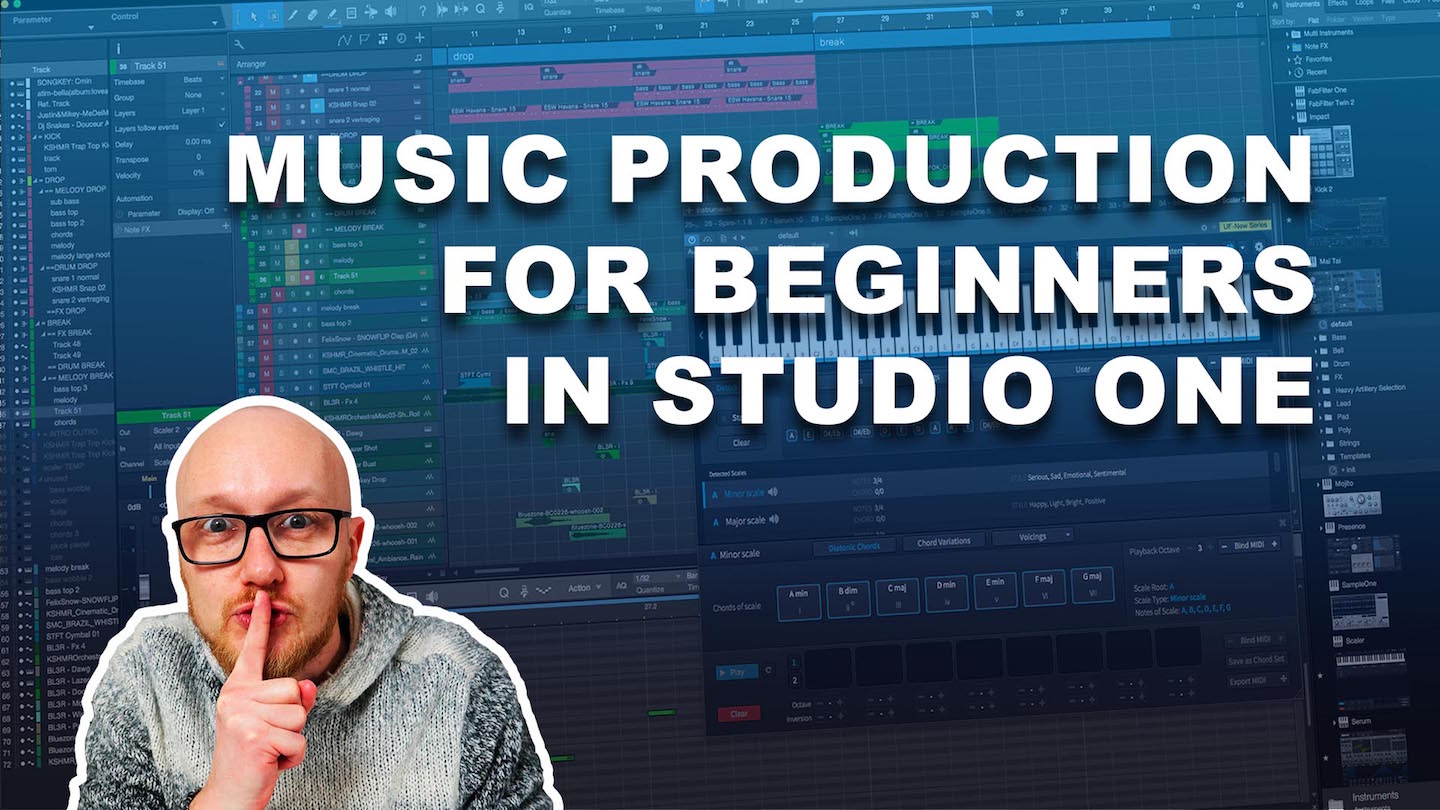FAQ
Is it a course specific to Studio One? Or will I be able to follow along with another DAW?
If you are familiar with another DAW you will be able to “translate” the techniques to other DAWs since most DAWS have basically the same functionalities.
However, some functionalities or solutions are specific to Studio One that do not translate well.
For example:
Signal flow is basically the same for all DAWS, you can follow the explanation about signal flow.
But the way it is set up is vastly different compared to Logic Pro for example.
If I need to use studio one to follow along, would the Studio One Prime (free) or Artist edition (cheap) be sufficient?
Since the feature set of Prime is severely limited (to the point of almost unusable), it also limits the spectrum of explaining music production.
Artist has more features (see the comparison sheet:
presonus.com/products/studio-one/compare-versions)
The course is based on the full version: Studio One Pro.
You can follow along with Prime roughly 70% of the course.
You can follow along with Artist roughly 90% of the course, nothing major you will miss.
For example:
One lesson is going to be about compression.
Compression is a vital part of music production.
In Prime there is no compressor (and no way to add one yourself).
In Artist the standard compressor is included.
Is it a Music-Production course or a Studio-One course?
It’s a music production course in the first place.
I will explain some details about Studio One you need for music production.
But the course is not intended to be a full tutorial on Studio One.
Do you need to buy extra plugins for this course?
No.
But I use some industry standard plugins like Serum, Pro Q, Pro C and Pro L to explain basics.
I use these plugins because they are extremely visual and easy to understand for a beginner what happens to the sound.
Do you need to know music theory?
No, but it makes stuff easier.
You can follow along if you have a good hearing: if you can hear sounds right (which notes fit together).
A music producer needs to know the basics of music theory to become a professional.
An optional course will cover music theory for music producers.
Do you need to be able to play the keyboard/piano for this course?
No.
Why a course when it’s free on YouTube?
Is it?
YouTube is a great resource for tips or expansion of existing knowledge.
But YouTube creators never paint the full picture, it’s just a snapshot of information out of context of your learning curve.
YouTube creators never paint the full picture because unexperienced viewers only search for familiar/well known topics.
YouTube creators supply videos for a demand (search queries and suggested-video clicks).
If they don’t, their videos are unable to rank (nobody searches the topics), which hurts their overall promotion on YouTube (even for the topics they are able to rank for).
Since YouTube is a business, simply every YouTube creator “follows the money”.
The advantages of a course:
- uniformity
- one experienced teacher
- one resource: everything is in one place for convenience
- time saver: you don’t have to go and hunt for information (which is time consuming)
- step-by-step approach, information builds up gradually. I start at the beginning end at the end
What’s the language of the course?
English only
What equipment do you need for this course?
- Studio One Pro
- a computer that can run Studio One (windows/mac doesn’t matter)
How can I pay for the course?
Currently the webshop only supports credit card and Paypal.

